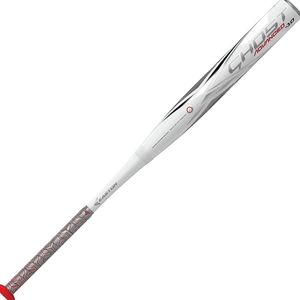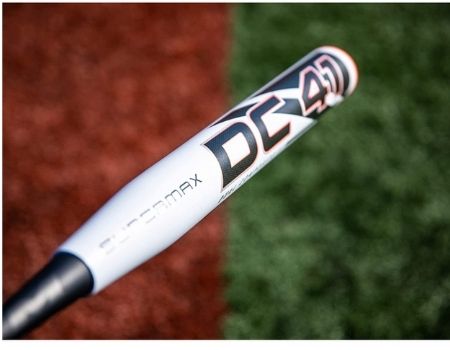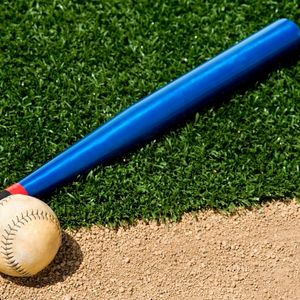Whether you are a rookie softball hitter in training or play regularly in your high-school team, you need a softball bat. But when you are out shopping for a new high-end softball bat, there is one question in the back of your mind. How long will this one last? Or rather, how soon do I have to replace it?
I know that feeling all too well and the sinking sensation in the pit of your stomach when you break your softball bat. But sadly, the road to being a pro hitter is paved with broken bats and shattered handles.
However, that does not mean you should not prepare yourself. Asking how long your softball bat will last is always a valid question whenever you are out shopping for a new one. And that is what I will try to answer today.
Full disclaimer, though; nobody can predict the exact lifespan of a softball bat. But I will try to give you an estimate of its durability based on different factors and help you understand how each of these things affects its overall lifespan.
How Long Does a Softball Bat Last?
Typically, a hot fastpitch bat that has little to no break-in time lasts for a few months or more, depending on the use. If you maintain it properly, it will last for a whole season. On the other hand, a premium slowpitch softball bat lasts for two seasons or more because the pitches are way slower.
How Long Does a Fastpitch Softball Bat Last?

The game of fastpitch softball is not as relaxed as slowpitch softball. In this game, the pitcher throws the ball with a windmill motion which allows the ball to explode from their hand. On average, a fastpitch softball pitcher throws the ball at a rate of 70 to 150 miles per hour.
In addition, a fastpitch softball hitter prefers a thinner bat which is easier to swing and allows him to connect the barrel to the ball. While it might make it easier for the hitter to hit the ball, it does take away a lot of its durability. Fastpitch softball hitters need to change their bats every year if they use them regularly.
Even if you get a top-shelf fastpitch bat that costs around $300 or more, chances are, the speed of the pitches and the thin nature of the bat will cause an issue. In short, fastpitch bats don’t last that long.
How Long Does a Slowpitch Softball Bat Last?

A slowpitch softball game is much easier on the bat than a fastpitch softball. In this game, the player throws the ball normally from underhand without winding up the pitch in a windmill motion. This results in the ball traveling slower at approximately 50 to 60 miles per hour.
Because of this pitching speed, the ball does not impact the barrel of the bat too hard. Besides, slowpitch softball bats are thicker and bulkier, which as a rule of thumb, makes them more durable. A typical slowpitch softball bat lasts around two years with frequent use.
How Long Does an Aluminum Softball Bat Last?

Aluminum softball bats don’t last as long as composite bats. But it still can last for an entire season (there will be exceptions, of course). Roughly, I’d say an aluminum bat that’s used regularly can last for 6 months or more.
How Long Does a Composite Softball Bat Last?

Again, there is no fixed answer here. It greatly depends on the way you use it + how much you’re using it.
Besides, composite bats can come in two forms – A) Hot out of the box & B) Need to be used/broken in. Hot composite bats that are ready for action right off the gate tend to die in a couple of months or so. That’s why you’ll see that $300-$400 hot composite bats only last 3-6 months.
On the other hand, cold composite bats need time to get warm and ready. These bats last longer and don’t crank or dent easily. A cold composite bat can last for 1 year or more.
How Often Should You Replace a Softball Bat?
As long as you can play comfortably with it, I’d say keep your bat. But as soon as you realize that your bat lost pop or the exit speed is weak, think of a replacement.
I think youth softball players can use a bat for more than a season. I’ve seen some students use one bat for 2 years. High school or college level softball is different. From the age of 14, pitch speeds aren’t 35MPH any more. They’re around 45-60MPH.
Naturally, a softball bat that takes on 50MPH fastballs every day isn’t going to last long. That’s why most serious ballplayers have to replace their softball bats once a year at least (sometimes it can be twice a year as well). I know it sounds like losing a lot of green. But that’s the truth.
Factors that can contribute to a Softball Bats Lifespan
I wish I could find a softball bat that would last me a lifetime. It would have saved me thousands of dollars over the years. Even if you care and maintain your softball bat and only bring it out for select matches, the truth is, it will require replacement eventually.
There are many factors that can affect the overall lifespan of a softball bat. Factors such as its construction material, how you store it, or even how much you spent on it affect its durability.
If you are a rookie to the game, naturally, you would have little knowledge about these things. So let me give you a quick rundown of the different things that can dictate the lifespan of your softball bat.
1. Softball Bat Material
The material with which the bat is made is the first thing that affects its durability. Softball bats can either be made out of wood, composite, or aluminum alloy. Not only does it affect the durability of the bat, but it also affects how much the softball bat costs.
Let me talk a bit about the different types of materials to help you understand how it affects the durability and quality of the bat.
· Composite
Composite bats are a somewhat recent invention compared to aluminum or wood and are considered the most durable of the bunch. These bats are made of carbon composite materials layered on top of each other. The end result is that the bats end up with a stronger frame that is impervious to dents.
Composite bats do get cracked and are quite vulnerable to cold temperatures. Composite bats do not work well or last for long if you constantly use them under 60 degrees Fahrenheit temperature.
Composite bats also require breaking in, unlike aluminum or wood bats. But the process is pretty easy. When you buy a new one, you want to take it to a ballpark and strike the ball around 150 to 300 times to get it to its peak performance.
But once broken in, you will see a massive boost in performance and durability. Most composite bats are good for around 1000 swings. But after that, the performance of the bat starts declining gradually.
· Aluminum
Aluminum bats, when they first came out, offered a fantastic alternative to wood bats. These bats are lighter, easy to swing, and also quite durable. Well, not as durable as composite or wood bats, but still durable enough to last you a pretty long time if you take care of it.
Aluminum bats are made using a single piece of metal and are hollow inside. That is why these bats can get dented, unlike composite bats. However, there is little to no chance of it cracking. On the plus side, aluminum bats are also excellent if you want to play in cold weather as the temperature does not affect it as much.
Another advantage of aluminum bats over composite bats is that they require no breaking in. So, you will be able to hit the pitch the moment you get your hands on one.
· Wood
Though wooden bats were the first to come, these days, softball players do not use them. Most coaches, like me, still prefer using wooden bats in training sessions as they are heavier and help put your skills to the test.
That being said, wooden bats are extremely durable as they are made of solid pieces of wood. As they are not hollow inside like alloy bats, there is absolutely no chance of them getting dents. They can still crack, similar to composite bats.
Maple, birch, and ash – are the three main types of wood used to make wooden softball bats. Maple bats are the heaviest, and ash bats are the lightest, while the weight of birch softball bats falls right between maple and ash.
When it comes to durability, however, maple lasts the longest, while birch and ash bats have a similar lifespan. When it comes to performance, most people prefer ash softball bats as they have a better trampoline effect on the ball.
2. Batting Frequency
No softball bat in the world will last you a lifetime. Even if you bought the most expensive/ best softball bat in the world, the inevitable truth is that you will have to replace it one day or another. And if you use the bat frequently, you might have to replace it sooner rather than later.
This means that if you use the same bat that you used in training four times a week in high-pressure competitive games, there is a chance that it will not last you a year. That is why I advise my youth players to use a cheaper wooden bat in practice and move on to their expensive softball bat during a competitive match.
The rule of thumb is that the more you hit the ball with your bat, the closer it gets to the end of its lifespan. That does not mean you should not play with it at all, just try to spread out its use over the course of one or two years and only use it when you need it.
3. Swing Power
Have you ever noticed how a strong power hitter often has to replace his bat? The reason is quite simple when you think about it. As the power hitter hits the ball harder with the barrel than an average contact hitter, he will wear out his bat faster and will require a quicker replacement.
That is why I recommend going with the best softball bats for power hitters, as it lasts longer than a lightweight, balanced bat. That way, even if he hits with stronger swing power, the bat will be sturdy enough to handle it. The greater the swing power of the batter, the less the bat lasts.
4. Temperature
Not all softball bats react the same way to temperature. Some bats are more vulnerable to cold temperatures. For example, composite bats are notorious for cracking when the ambient temperature is below 60 degrees Fahrenheit. That is why I recommend hitters avoid going with a composite bat during winter softball.
While aluminum and wood bats are more resilient against the cold, they can still get damaged if the temperature is below 50 degrees Fahrenheit. You should also keep this in mind when you are putting away your softball bat for a long time. If the temperature of the storage locker drops below 50 or 60 degrees frequently, it will not bode well for the overall durability of your bat.
5. Maintenance
If you want your softball bats to last, take care of it. It is as simple as that. Wooden bats require more maintenance compared to composite and alloy bats. You need to apply oil when needed and store it in a dry, moisture-free place. Otherwise, the condition of the wood will become poor, which can affect its lifespan.
Composite and alloy bats also require some care and maintenance. The most important thing to remember is to store them properly. I have seen many excellent softball bats getting damaged simply because of oversight. Besides, taking care of your equipment should always be a priority for any thriving hitter.
6. Balls Used
Another thing that can affect the durability of your softball bat is the type of ball that you hit most often. Softball balls can be made of two different types of center materials. It either features a kapok fiber and polyurethane center or a cork and rubber center.
Balls made of kapok fiber and polyurethane are hard and typically used in professional fastpitch softball matches. On the other hand, cork and rubber-centered softball balls are softer and typically used in recreational or slowpitch games.
If you mostly play with cork and rubber balls, your bat will not be under too much stress and hence last longer. But with kapok fiber balls, the bat can get damaged sooner because of the constant impact with harder balls.
7. Bat Quality and Price
There’s a saying – you get what you pay for. And this phrase could not be truer when it comes to softball bats. What I mean is if you are planning to spend 40 to 50 dollars on a softball bat, you can expect a decent performance for a time (yes, there are some decent options in this price range). But you honestly cannot expect it to last you as long as a high-end 400-dollar softball bat.
The more you spend on your softball bat, the better its quality will be. In other words, it will last longer and will give you better performance than a cheap option. I know not everyone can afford to spend 300 to 400 dollars on a softball bat, but sadly, there is no way around it.
Fastpitch and Slowpitch Softball Bat Replacement Options
If your old bat is too old to handle the heat, you can always get a replacement. I’ve suggested two excellent softball bats here for both fastpitch and slowpitch ballplayers.
Rawlings | Mantra | Fastpitch Softball Bat Series

For fastpitch hitters out there, there is one bat that I recommend above all else, the Rawlings Mantra. Frankly, when I first heard about its exorbitant price tag of around 400 dollars, I, like many others, thought it was overrated. But after trying it out, I am not ashamed to admit that it made a fan out of me.
It features a two-piece composite design along with a three-step inner barrel. So, you will get perfect weight distribution from the barrel to the handle and can swing it faster, delivering a more powerful hit whenever it is your turn at the plate.
But that is not what makes this bat special. The most amazing thing about it is its Blast motion Sensor handle knob, which is the first of its kind to be integrated into a softball bat. This allows the hitter to get better feedback at the moment of contact, eliminating sting and ensuring you get a better feel whenever you hit the ball.
The bat also has a larger sweet spot enabling you to get powerful swings whenever you hit the ball. You can find it in different sizes and drop weights, so get the one that suits your specific requirements. I personally recommend the 33-inch model for high-school hitters.
This is one of the best fastpitch softball bats out there and worth every penny that it asks for. It is approved for use in the ASA, USSSA, NSA, ISF, and ISA plays, so you will not be getting any trouble from the officials if you decide to pick this up for yourself.
DeMarini Juggy Slowpitch Softball Bat

So, you broke your old slowpitch softball bat and now wondering which one will serve you better? Well, if you have never heard of it before, let me be the first to introduce you to the Juggy Slowpitch Softball Bat by DeMarini. It rarely gets better than this when you are looking for the powerful slowpitch softball bat.
This is a two-piece composite bat with a Stack3D double wall barrel and a TR3 F.L.O composite handle. The combination of the material makes it a very formidable bat at the hand of a good hitter. For power hitters, this bat is a must-have, thanks to its end-loaded design.
However, contact hitters might not benefit much from this bat as it might be a bit on the heavy side for them. But the sweet spot is massive with this bat allowing you to hit home runs with relative ease. The red, black, and gray color combination of the bat gives it an extremely stylish look.
Thanks to the tapered handle, gripping the ball feels comfortable, and you will feel no noticeable stinging as you connect the barrel to the ball. It costs around 300 dollars which understandably is a bit steep. But if you want performance and quality, this one is a no-brainer for your next big game.
Parting Shots
The durability of a softball bat is not set in stone. Even when you have two bats of the same model, one can last longer than the other, depending on how well you treat it. So, my advice is if you want to make your bat last longer, take care of it from time to time.
I hope my article could give you an idea of how long your softball bat will last. And if it does break, I hope my replacement options could help you figure out which one you want next for yourself. Cheers!
